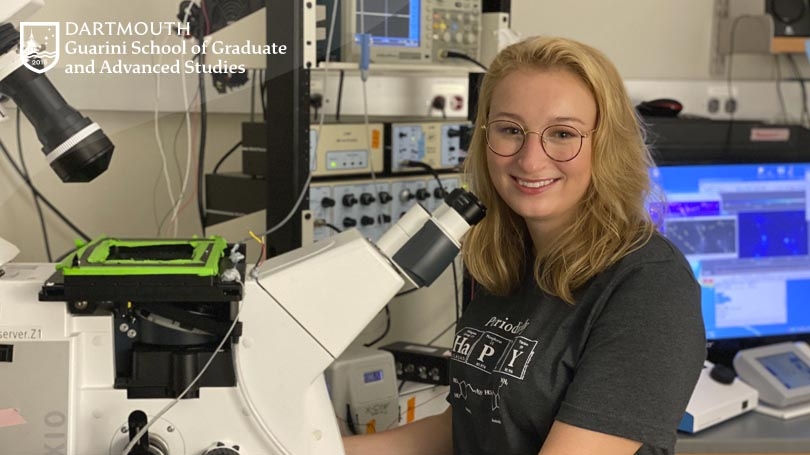Modern computer chips can perform trillions of computations per second. However, the human brain can vastly outperform high-powered computers in terms of tasks in vision, learning, and pattern recognition. This is even more impressive when you consider that the human brain is making all of these calculations while running on a granola bar and cup of coffee. Scientists want to study how the brain's computational units, neurons, can outperform these computer computations even though they typically are performing 10-50 computations per second. Like computers, neurons rapidly communicate with electrical signals. However, a key difference is that neurons convert an electrical signal to a chemical signal and then back to an electrical signal. This conversion is thought to be the principal site of memory formation in the brain.
The chemical signal is the release of neurotransmitters that are stored in small packets or "bubbles" called vesicles. When an electrical signal arrives at a synapse, it causes the vesicle to fuse with the synapse releasing neurotransmitter. This is called evoked neurotransmission because it is a chemical signal evoked by an electrical signal. However, often times a neuron releases a chemical signal without being evoked by an electrical signal. This is termed spontaneous neurotransmission. Spontaneous neurotransmission is thought to have critical roles such as the maintenance of memories, synapse formation and generally maintaining the health and function of neurons during aging. Impairments of these spontaneous signals have been shown to be involved in numerous neurological etiologies ranging from Alzheimer's to Autism Spectrum Disorder. However, no one really knows what causes spontaneous neurotransmission, even though it was first observed in 1952 and has been observed in almost every nervous system studied including flies, frogs, mice and humans!
While these spontaneous events are clearly important in neuronal function, the term "spontaneous" may be something of a misnomer. The brain rarely does anything without a very specific purpose. Neurotransmitters are very expensive for the brain to make, release, and recycle. Additionally, the release of neurotransmitters is an extremely complicated choreography of molecular events, all of which must perfectly coordinate neurotransmitter release within a millisecond time frame, in a space no larger than a few hundred nanometers. The medical relevance and mechanistic sophistication of these events indicate that spontaneous release may not be so "spontaneous" after all and in fact, may be a critical piece of neuroscience that has been severely overlooked.
The difficulty of studying synaptic transmission is that the synapse itself is less than 1/100th the width of a human hair, and that a typical neuron makes over a 1000 connections so to study it you need a method that is both very fast and also small enough to measure something that tiny. The answer is all around us – light! The Hoppa lab uses genetic approaches that cause neurons to light up every time an electrical signal moves through the neurons or a packet of neurotransmitter is released. We engineer neurons to express a bit of green fluorescent protein from jellyfish that only lights up when the neurotransmitter glutamate is released. Our custom-built microscopes can see these spontaneous events like nanometer-sized fireworks! Not only does this look extremely cool, but it is an invaluable tool when studying spontaneous neurotransmission. We use the microscope along with high power cameras and lasers to take videos of these neurons during spontaneous neurotransmitter release.
By using this method, I can measure certain properties that may help elucidate more information about the function of spontaneous neurotransmissions. For example, where in the synapse is spontaneous release occurring, what molecules enable it to proceed, and what is special about the synapses where it occurs most frequently! The answers to these questions might help lead to new therapeutic approaches to help tune this novel form of neurotransmission and help treat various brain disorders.
